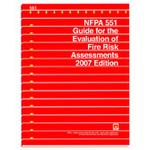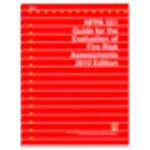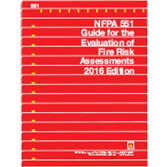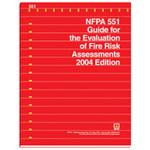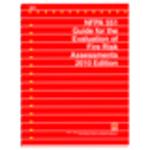Use NFPA 551 to approve or evaluate fire and life safety solutions based on fire risk assessments.
The application of fire risk assessment methods in developing fire and life safety solutions continues to increase. NFPA 551 identifies various types of fire risk assessment methods and describes the properties these methods should possess.
The Guide addresses:
- Applying risk informed decision-making for fire safety
- Selecting fire scenarios, identifying representative challenging scenarios and grouping such scenarios into clusters for the purposes of conducting more effective consequence analysis
- Documentation that should accompany a fire risk assessment
- Capabilities of those conducting a fire risk assessment
Revised with up-to-date terms concerning performance-based design and fire risk assessment methods, this 2007 edition adds:
- Guidance on how to address uncertainty when conducting a fire risk assessment
- Factors to consider when conducting or reviewing a fire risk assessment
- Guidance on how to address the changing effectiveness of fire protection equipment, features, programs, and procedures
- Expanded discussion on the role of qualitative, semi-quantitative likelihood, semi-quantitative consequence, and quantitative methods in a fire risk assessment
- Expanded discussion on cost benefit analysis
- More detail on proper documentation and elements of a fire risk assessment
- Expanded guidance on applying risk informed decision making for various fire safety goals including the preservation of cultural resources
NFPA 551 also covers the purpose and importance of an operations and maintenance manual in conducting a fire risk assessment, and the importance of using checklists that address both likelihood and consequence.
Product Details
- Published:
- 04/15/2007
- Number of Pages:
- 24
